Praying mantises are an interesting insect often associated with stillness or luck in some cultures. While you may see a full-grown green praying mantis now and again in the fall, baby praying mantis are even rarer to spot.
Learn more about baby praying mantises — from what they need to survive to how some cultures regard their existence.
A Baby Praying Mantis Is Called a Nymph

Baby praying mantis aren’t larvae.
©Akchamczuk/iStock via Getty Images
In the wild and wonderful world of baby animal and insect names, the baby praying mantis is known as a nymph. The praying mantis doesn’t have larvae or pupa — instead, the insect transforms right from an egg to an adolescent nymph at birth. As it grows and molts, it becomes larger.
Insects have different lifespans than animals, so praying mantis life spans aren’t a blanketed number. Mantises live anywhere between a few days to six months, so maturity is less of a measure of time and more of a measure of molts. Scientists affirm it takes between seven and nine molts for a baby praying mantis to reach full maturity.
You Need to Water Your Baby Praying Mantis
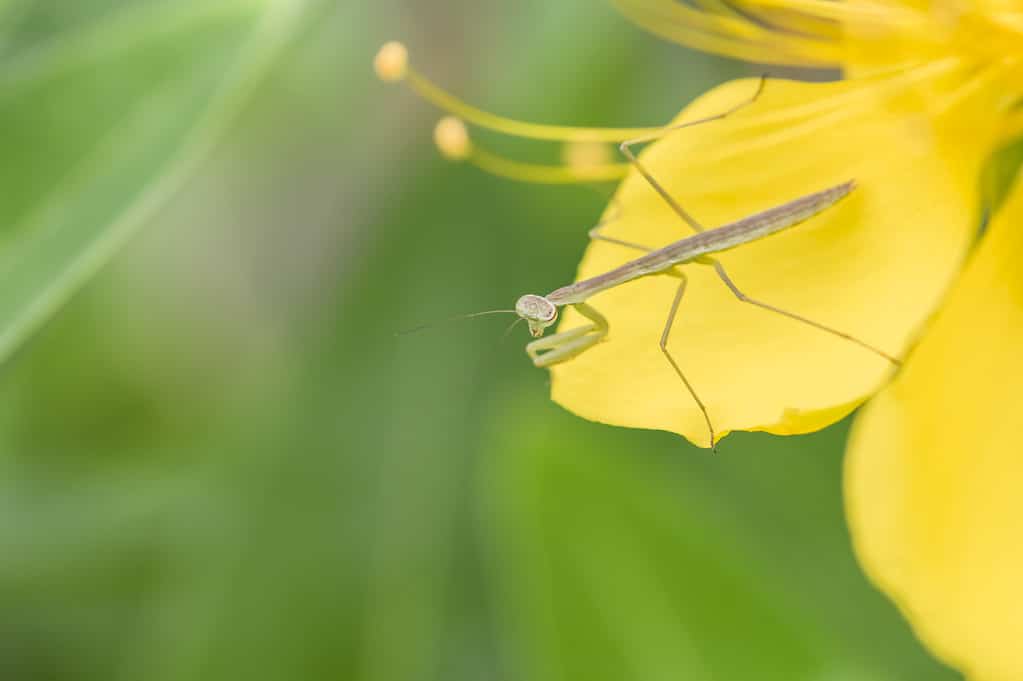
Not all baby praying mantis will live to see maturity.
©jyugem/iStock via Getty Images
If you’ve purchased a case of praying mantis eggs to hatch yourself, you need to have fresh water available for your baby praying mantises when they hatch. Even if you only have one, it will need immediate access to clean drinking water to survive. Failing to provide adequate water will dry out your baby praying mantis’ exoskeleton and cause death.
Not only does the baby praying mantis need water; but it will need food too. Though born with a mandible and an ability to hunt, pet baby praying mantises will survive well on flightless fruit flies in the first few weeks of their lives.
It Has Up to 200 “Twin” Siblings

Baby praying mantises hatch from an ootheca.
©Akchamczuk/iStock via Getty Images
Sometimes, the egg cases have up to 400! Praying mantises move from egg, to nymph, to adult. When laid in an egg case, praying mantises number between the low 100s to as many as 200. That means, out of a single egg case, one praying mantis may have as many as 199 other brothers and sisters emerging at the same time.
Unfortunately, not all 200 or so siblings will achieve a full lifespan. Researchers have rough estimates of how many eggs from a case survive to maturity — as few as five out of 200 will reach adulthood and make their own nymphs.
Baby Praying Mantis Can Bite
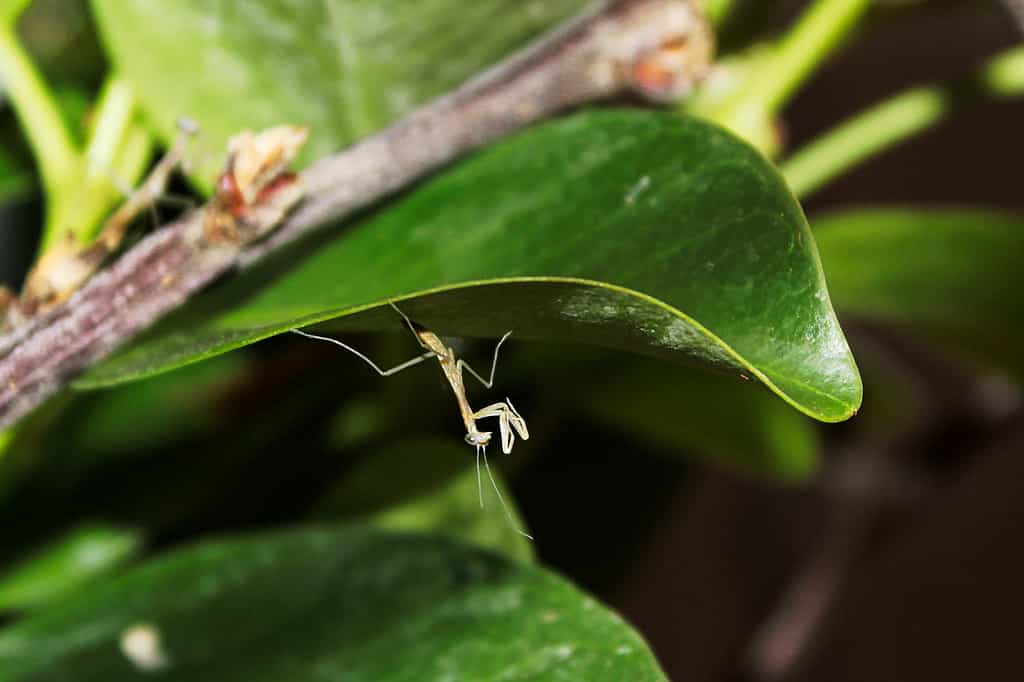
The mandible of a baby praying mantis works as soon as it hatches.
©Akchamczuk/iStock via Getty Images
Unlike some other insects, the praying mantis only has three stages of development: egg, nymph, and adult. When the nymphs hatch, they look incredibly similar to their older counterparts’ appearances — just a lot smaller. As such, they already have their mandible formed and ready to use.
Thankfully, baby praying mantises don’t tend to seek out humans to bite. The only reason they’d bite you is if you handle them roughly or they feel threatened. If you’re careful, there’s no reason for a baby praying mantis to bite you.
On the off chance the baby praying mantis bites you, there’s no reason to worry or fret. Praying mantises are nonvenomous and the most care you should perform after a bite is to wash your hands well.
A Group of Praying Mantises Is Called a Clutch
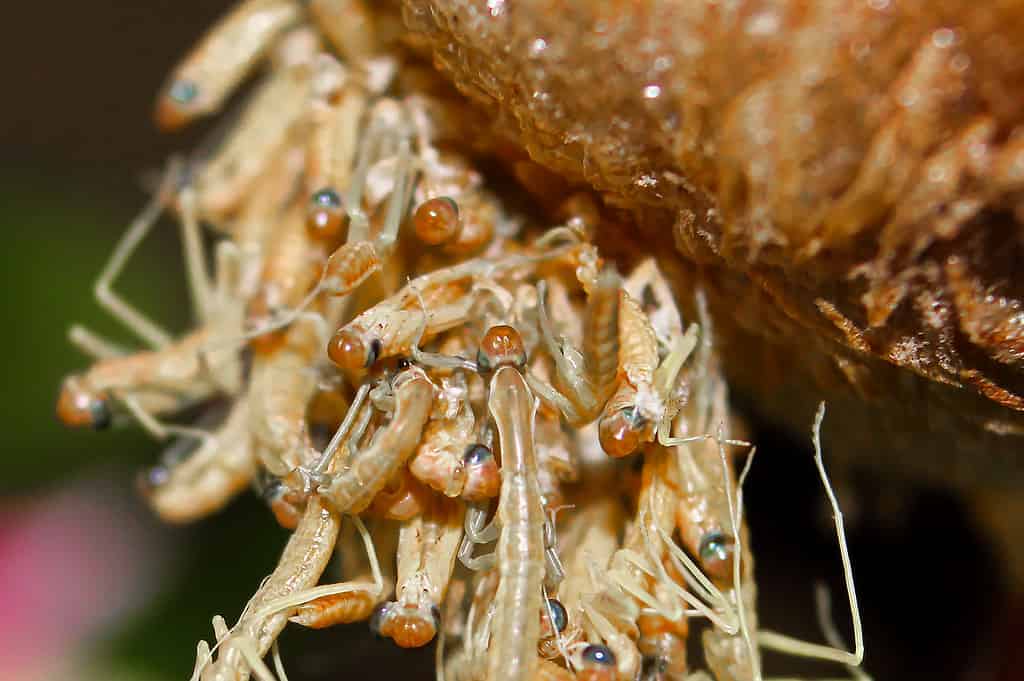
A clutch of praying mantis babies will hatch from their egg case at the same time.
©Akchamczuk/iStock via Getty Images
Similar to the naming of a baby praying mantis is the naming of what to call the group of them when they hatch. Like birds, a group of baby praying mantises goes by the name “a clutch” of praying mantises.
Baby Praying Mantises Are Born With the Ability to Jump
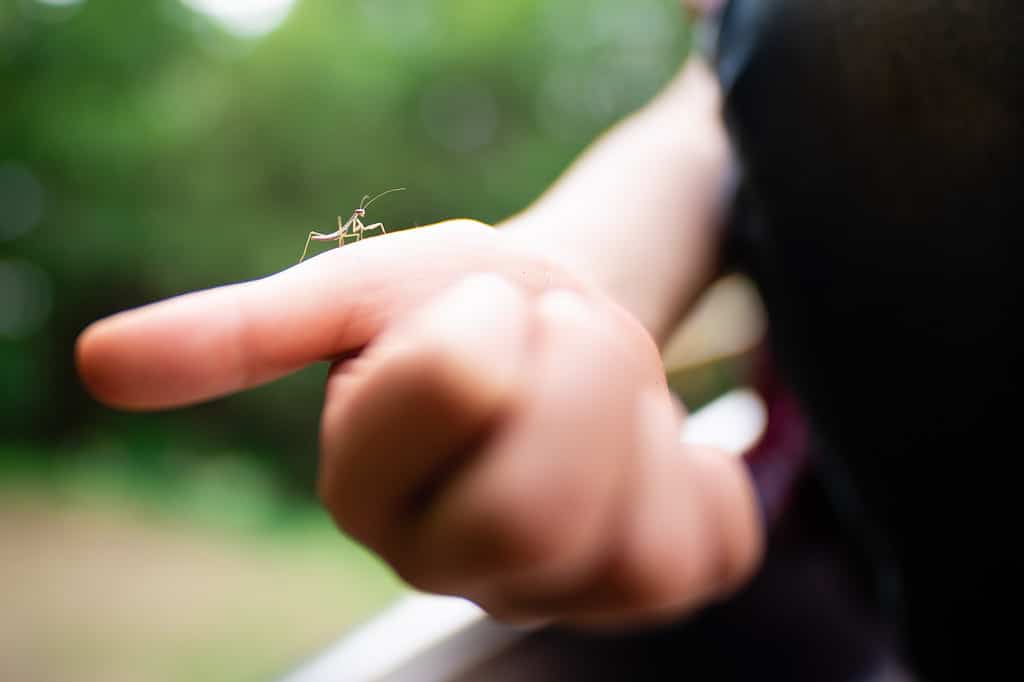
Jumping helps baby praying mantises stay alive longer.
©Hakase_/iStock via Getty Images
Born as a fully-functioning, smaller version of the adult praying mantis (just like giraffes or other animals), baby praying mantis can jump just like their mature counterparts to avoid danger, reach food, and get to where they need to be — fast.
For example, this video shows a baby praying mantis using controlled movements to jump from one place to another in a minute 80 milliseconds.
Baby Praying Mantises Learn How to Avoid Bats Early On
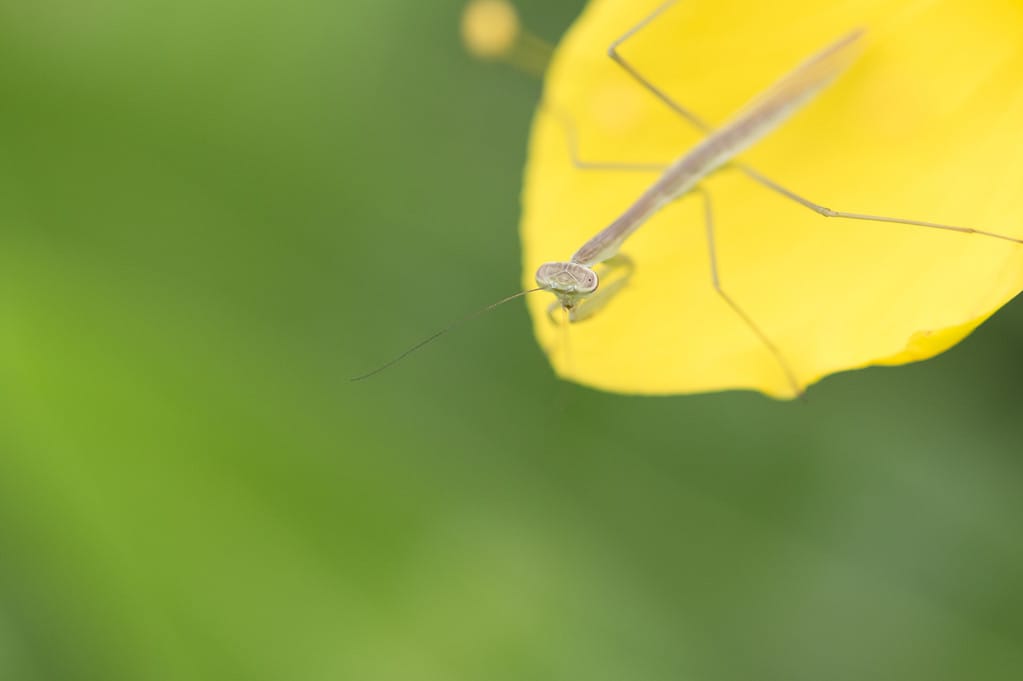
Baby praying mantises are prey to bats.
©jyugem/iStock via Getty Images
Despite their five eyes, the baby praying mantis doesn’t have the reconnaissance, thanks to its hearing. Instead of a full spectrum of sounds, praying mantises can only hear vibrations. However, this is uniquely beneficial to them, as baby praying mantises learn in a trial by fire that the echolocation sounds of bats hunting mean they need to flatten themselves on the ground to avoid detection and stay alive.
It’s a Culture Star
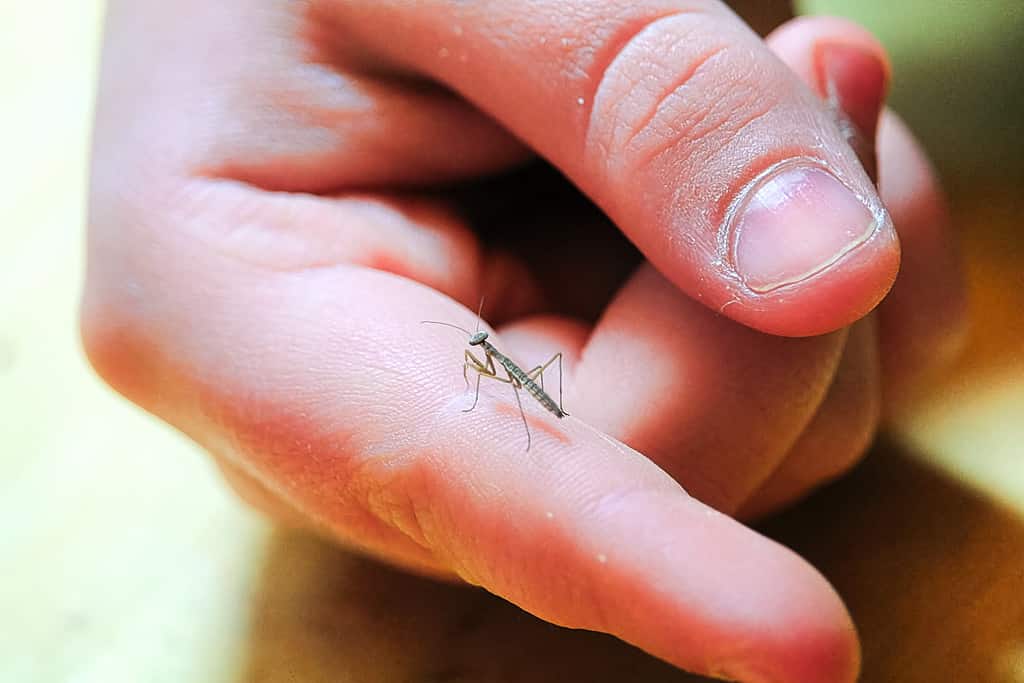
Several cultures regard the praying mantis as a symbol.
©Akchamczuk/iStock via Getty Images
From China to Egypt and beyond, the baby praying mantis (as well as its adult counterpart) remains a significant symbol in many cultures. In China, idioms like “The mantis raises his arms to block the cart” or “The mantis stalks the cicada without knowing the oriole is behind him,” communicate a level of misplaced bravado in oneself. However, it also has a reputation for stillness and well-placed aggression based on the “Mantis Style” form of kung-fu (Tang Lang Quan).
Furthermore, Ancient Egypt had a special reverence for the baby praying mantis. During an excavation of Deir el-Medina, archeologists found a small coffin of clay that had the remains of a praying mantis wrapped in linen.
The photo featured at the top of this post is © Akchamczuk/iStock via Getty Images
Thank you for reading! Have some feedback for us? Contact the AZ Animals editorial team.






